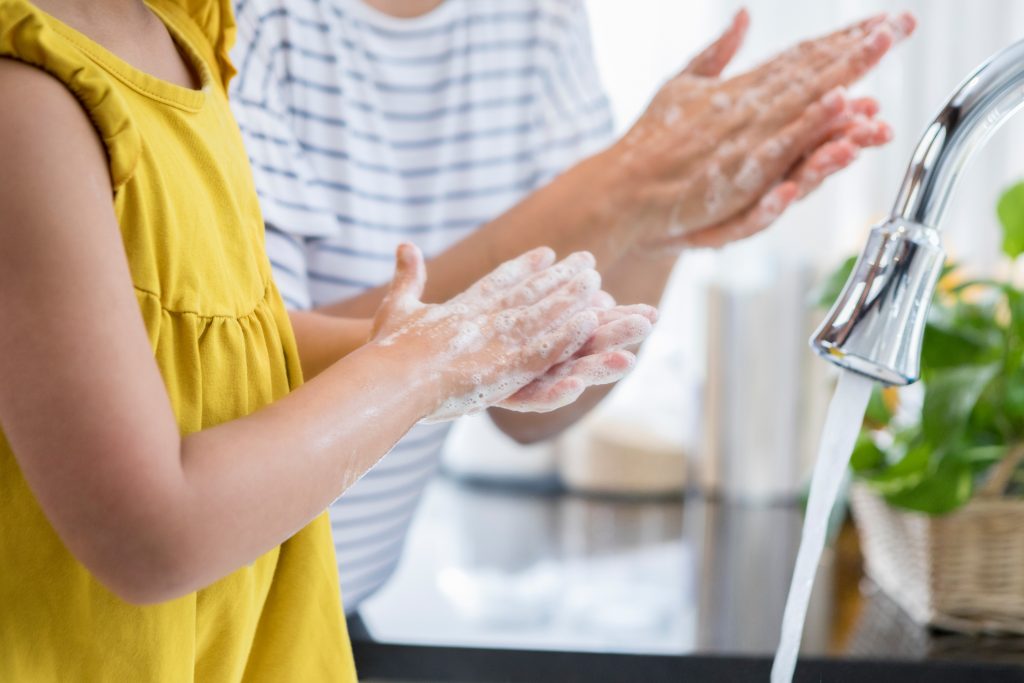Of all the environmental hazards you face, bacteria and viruses are the scariest. That’s because they cause infections, which kill millions of people around the world every year. Check out these sobering statistics:
- Respiratory infections kill four million people worldwide per year.
- They’re the #1 cause of death of children under the age of five.
- Viral infections that affect the liver cause between 6,000-10,000 deaths every year, just in the U.S.
Download Infections & How to Prevent Them as a PDF.
Bacterial or viral-borne diseases
Bacterial or viral-borne diseases spread in droplets when you cough or sneeze, or when you touch something with dirty hands. You’re at risk when you have close contact with infected people or touch surfaces like doorknobs, light switches, and telephones.
Wash your hands to prevent infections
Handwashing with soap and water is the best way to prevent the spread of infection. So, make sure to wash your hands before you eat or prepare food and after you:
- Cough or sneeze
- Handle dirty tissues
- Use the restroom
- Change a diaper
- Touch surface lots of others have touched
How to wash your hands
To make sure you’re getting the most from your handwashing, follow these steps:
- Wet your hands with warm running water.
- Add soap and then rub your hands together, away from the running water, making lather. Continue for at least 20 seconds.
Rub the front and back of your hands, between your fingers, and under your nails.
Scrub your knuckles, and don’t forget your wrists. - Rinse your hands well under warm running water. Let the water run back into the sink.
- Dry your hands completely using a clean towel, preferably a paper towel. Use the paper towel to turn off the faucets.
What to do if you can’t wash with soap and water
If you don’t have access to soap and water, use hand sanitizer or wipes. Read the label to make sure they have at least 60% alcohol. Note: Wipes and hand sanitizer don’t work if you have spit or feces on your hands. You’ll need soap and water in those cases.
When you’re traveling, bring along a supply of antibacterial wipes or sprays. Use them to clean things like seatbelts and tray tables on airplanes, and phones and light switches in your hotel.
Remember: Washing your hands is the best protection again infection. But, if you don’t have clean water, use hand sanitizer or wipes.
Other ways to lower your risk
If you have a respiratory illness
- Keep your distance from people who have a known respiratory illness, or are sneezing or coughing.
- Limit contact with young children who are attending daycare.
If you have a contagious illness
- Avoid contact with other people with contagious illnesses.
- Avoid crowded places where people are in close contact.
If you’re visiting a doctor’s office or hospital
- Try to get the first appointment of the day
- Come when the waiting room is less likely to be crowded.
In high-risk situations:
- Wear an N-95 rated mask.
- Carry your mask in a small plastic bag when you’re not wearing it.
Vaccines protect you from infections
Follow CDC vaccine guidelines for
- Pneumococcal Disease
- Hepatitis A and B
- Tdap (for whooping cough)
And, make sure to get a flu shot every fall.
Bacteria and viruses are everywhere, but you can take steps to reduce your risk of infection.
For more in-depth information on this topic, please visit the Big Fat Reference Guide. If you are enrolled in AlphaNet’s Subscriber Portal, you can access the BFRG here.
Download Infections & How to Prevent Them as a PDF.

